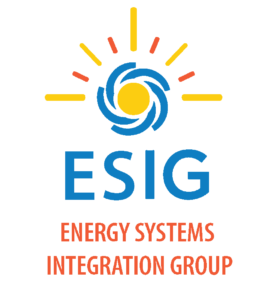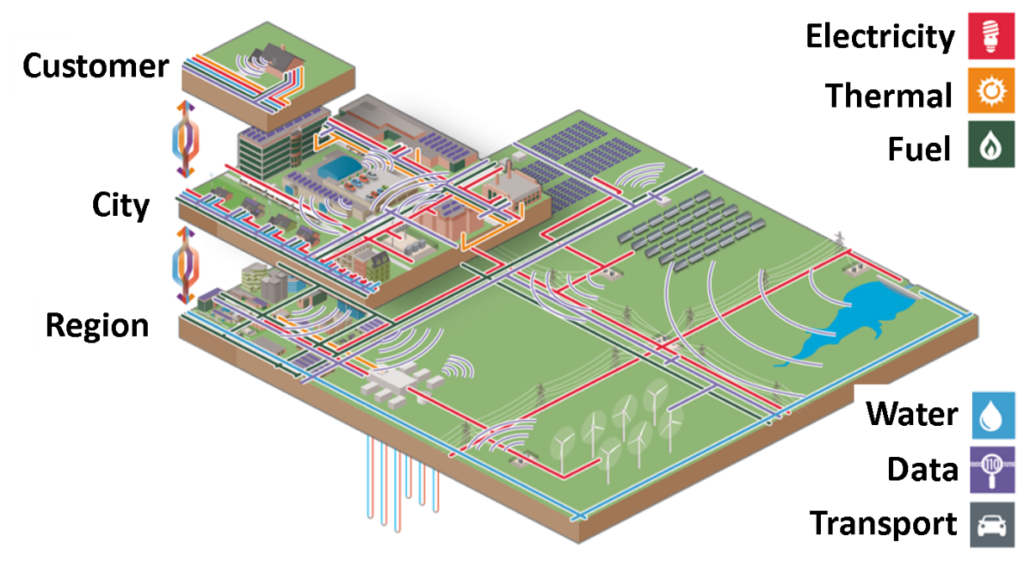How we got here
You’ve come a long way, baby! That’s how I feel sometimes when I think about the early days of the Utility Wind Interest Group (UWIG). We started UWIG in 1989 with six US utilities, and now we are the Energy Systems Integration Group (ESIG) with 180 members from around the world!
In the beginning, we were just trying to get our arms around wind energy and what it meant for the utility system. Was it real? Was it going to make an impact? Was it here to stay? Well, I think those questions have now been answered. We spent a lot of time doing education and breaking down barriers, and found a home in the integration space as we transitioned to the Utility Wind Integration Group. And then around 2010, we went through the same thought process with solar PV, as our members were encouraging us to include PV in our scope. We transitioned from the Utility Wind Integration Group to the Utility Variable-Generation Integration Group (UVIG) in 2011.
Even that has not been enough, as the industry continues to evolve. Wind and solar are no longer just being integrated, they are a mainstream part of the power system. So we began to ask where the future challenges were going to be. As part of a careful strategic planning process led by our board of directors, we realized that unless there was tighter coupling between the main energy vectors of electricity, heat and fuels, including with the energy-consuming infrastructures such as transportation, buildings, and water, there would be massive amounts of curtailed and wasted renewable electricity as the markets looked forward to hundreds or thousands of hours of zero marginal cost energy. So we decided the next big challenge was integrating energy systems, moving renewable energy through the electric system and into other energy systems and applications. Thus the current transition to the Energy Systems Integration Group (ESIG) that was unanimously approved by the vote of our membership at the annual meeting in Tucson in March of 2018. During this process, there was ever increasing recognition of societal pressures for clean energy and energy efficiency, as well as pressure on major utilities and corporations globally from shareholders, employees and customers to make the transition to clean energy.
What it’s all about
So just what is energy systems integration? According to the International Institute of Energy Systems Integration, which has merged with ESIG, “Energy systems integration (ESI) is the process of coordinating the operation and planning of energy systems across multiple pathways and/or geographical scales to deliver reliable, cost-effective energy services with minimal impact on the environment.” Renewables have been making major inroads in the electrical system, but progress has not been so rapid in the transportation and building sectors. That should either tell us that we need to strengthen the linkage between the electric sector and the transportation sector, or perhaps tighten the coupling with the fuel energy vector. The figure below illustrates some of the critical pathways and scales of energy systems integration. The different geographical dimensions of energy system integration are illustrated, ranging from individual customers, to cities, to regions. The coupling among the three energy vectors of electricity, fuels and heat (all of which are transporting energy) are shown. The third dimension of coupling to energy consuming infrastructure is also illustrated, such as transportation, buildings, and water, aided by the applications of data and communications. The optimization of planning and operations across these multiple pathways is a critical component of energy systems integration, leading to increased utilization of renewable energy, increased system reliability and performance, and minimization of costs and environmental impacts. ESI is most valuable at the interfaces where there are tight couplings between the systems, with a recognition that the competing technical, economic, regulatory and societal interests must be taken into account.
What is energy systems integration?
(NREL, 2017)
Objectives and Mission
The energy industry is changing, and so should we. Renewables are now mainstream, and integration knowledge and experience have increased significantly among members. While system operators globally are doing a good job of solving many of the problems, there are still many barriers to the full understanding and deployment of wind, solar, storage, distributed energy resources (DER), and load resources. Thinking is shifting from integrating renewables in electric systems to integrating multiple energy systems and energy infrastructures. Current frontiers include rapid deployment of wind, solar, storage, DER and demand response; power system dynamics with high non-synchronous generation penetrations; market design for high levels of variable generation; forecasting at all levels of spatial and temporal resolution for multiple purposes, and full integration of forecasts and uncertainty into planning and operations across the board. Coordinated planning and operation across multiple energy systems is the challenge of the future.
This is where I see the Energy Systems Integration Group coming in. These frontiers mentioned above, and the massive evolution of energy systems, create a critical need for education and collaborative problem solving among the affected stakeholders. As a non-profit educational association that provides workshops, resources and education, ESIG plays a major role in filling this need. ESIG is committed to industry collaboration, forward thinking and knowledge sharing. ESIG supports a broad cross-section of the industry, including engineers, researchers, technologists, policymakers, social scientists, economists and the public with the transformation of energy systems. We do this in a way that is economic, reliable, sustainable, thoughtful and collaborative. The people that I have the good fortune to work with on addressing these issues are the best in the world, bar none. Please join us to help and participate in creating the future!
Charlie Smith, Executive Director
Energy Systems Integration Group


Leave a Reply